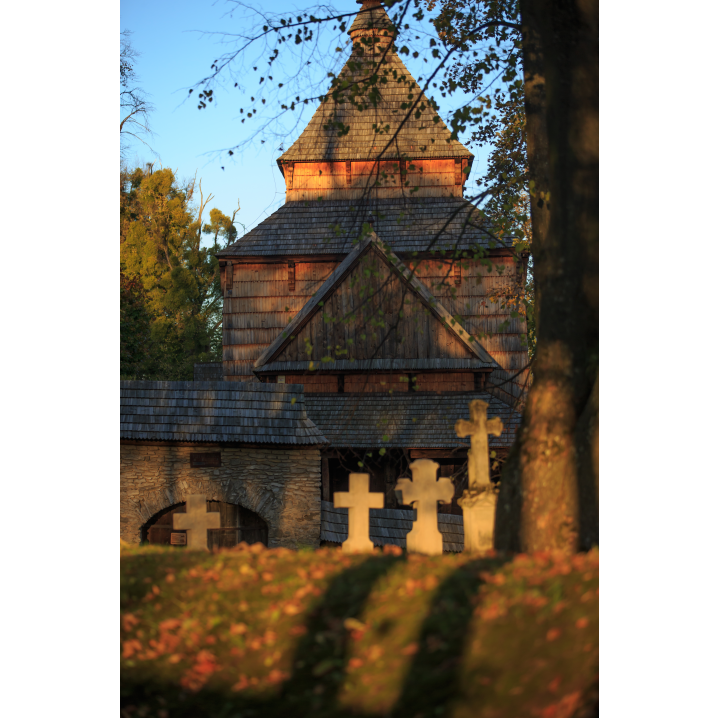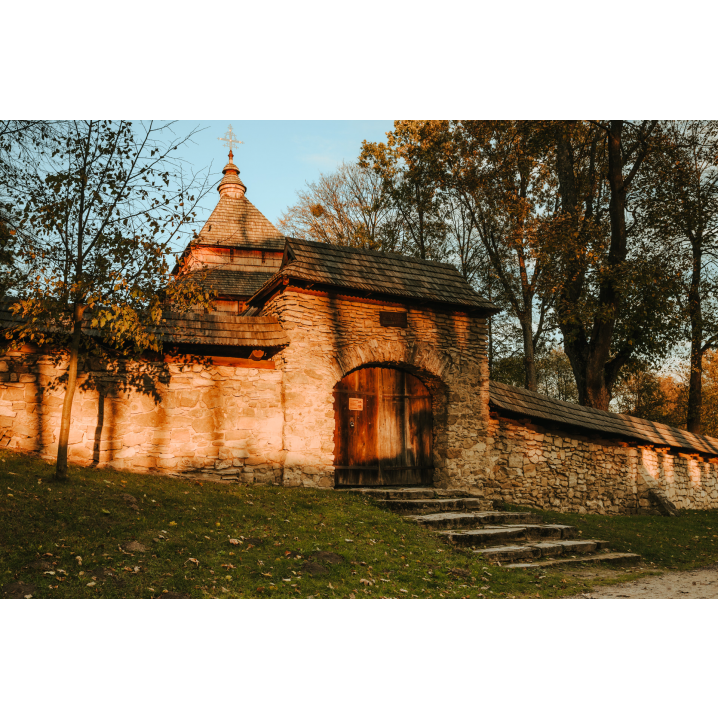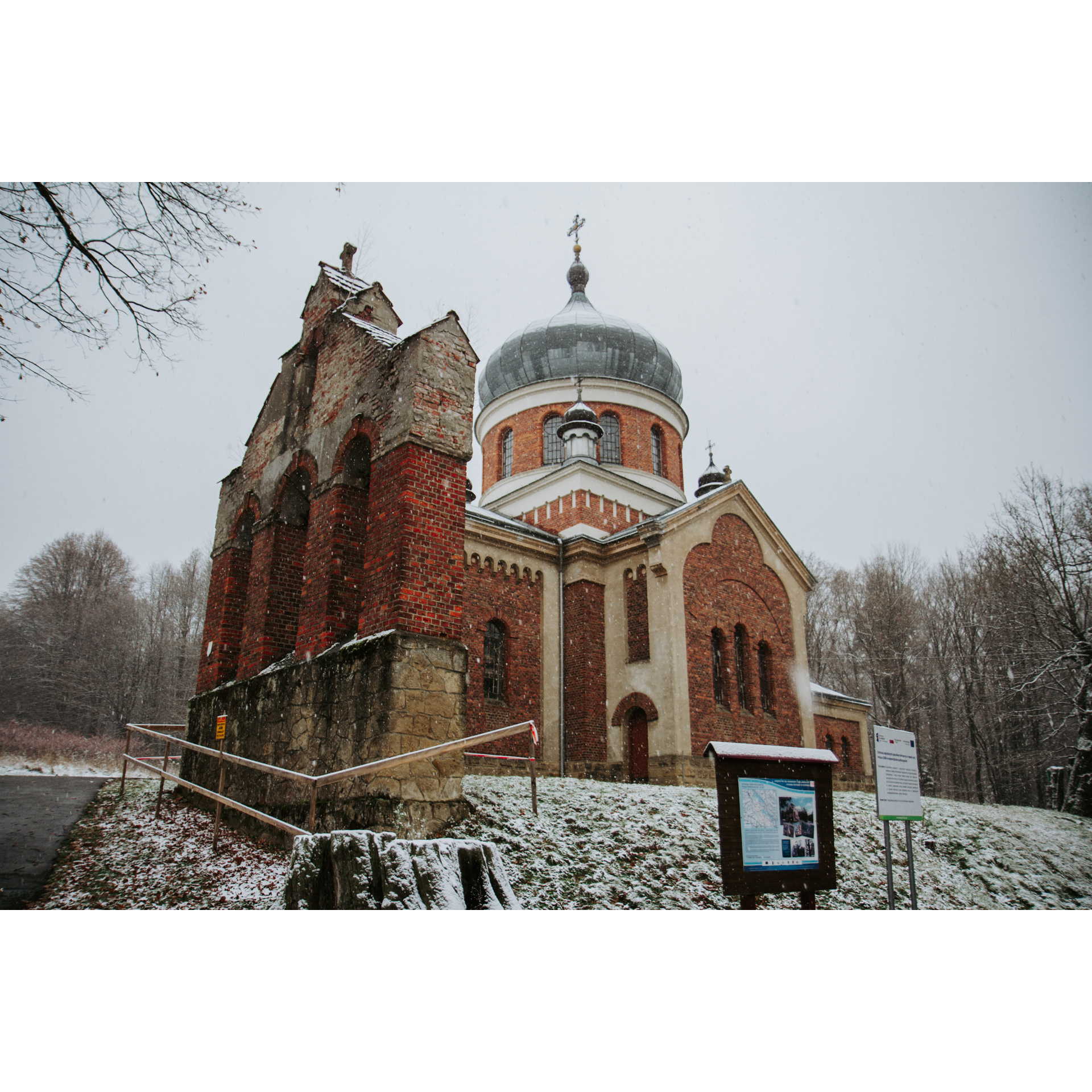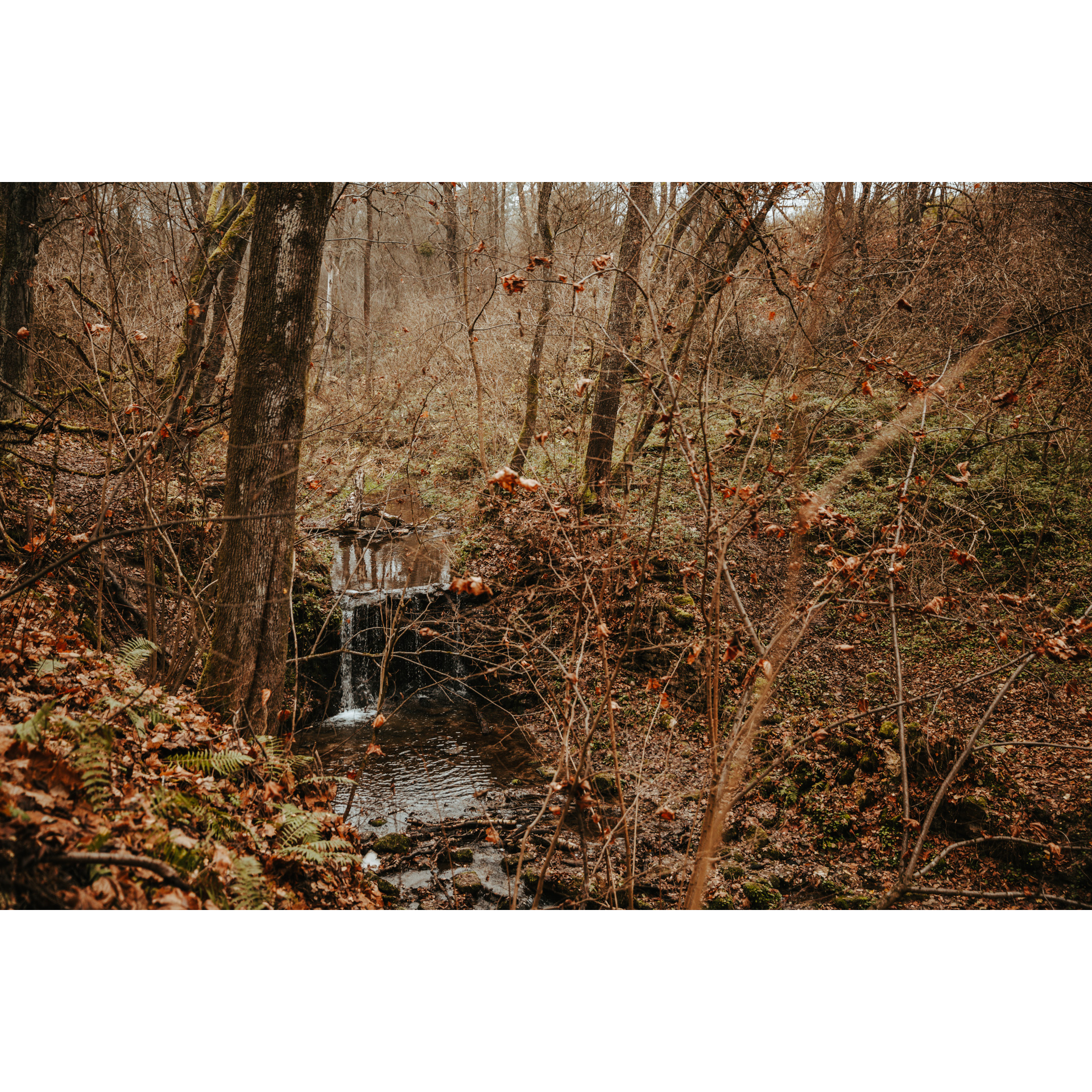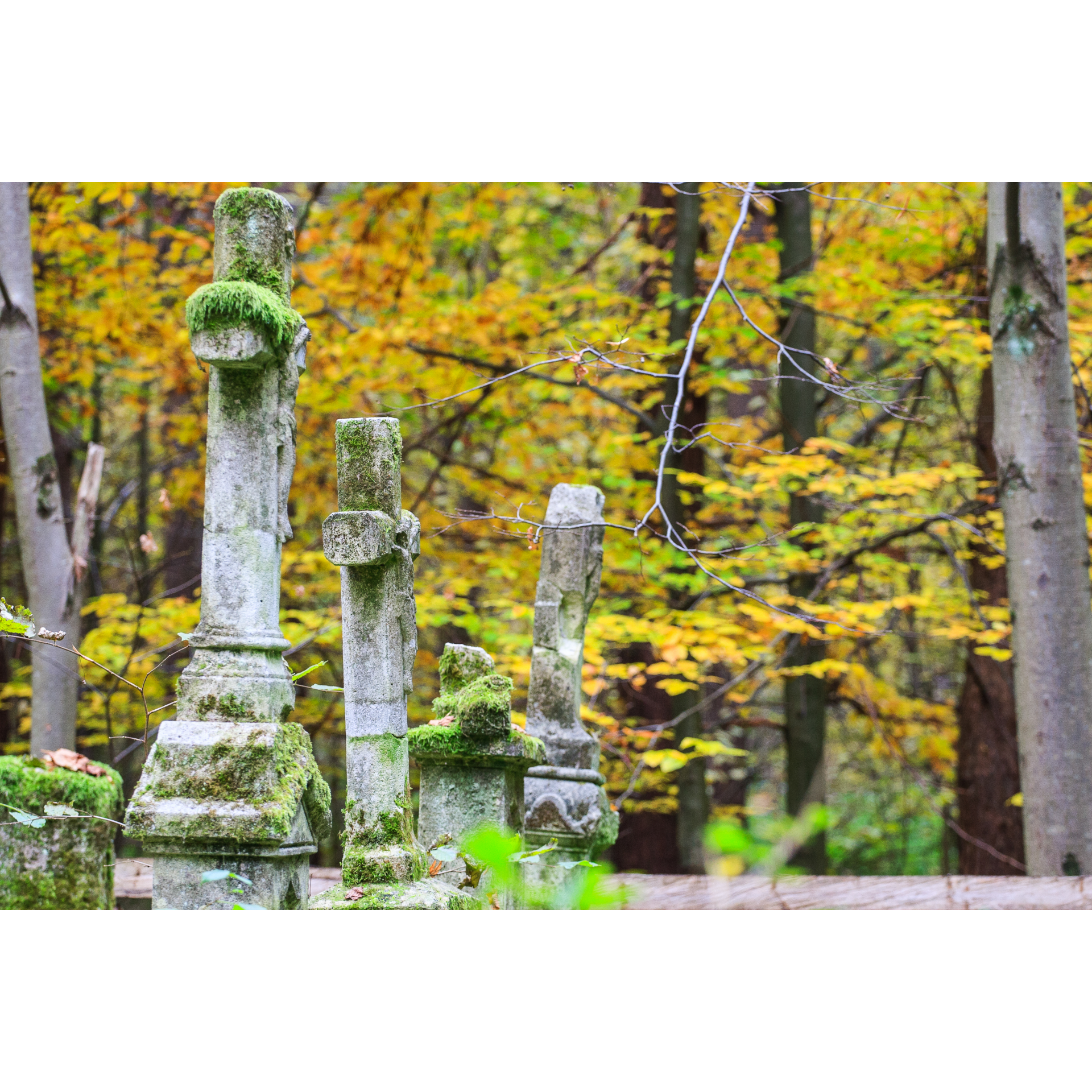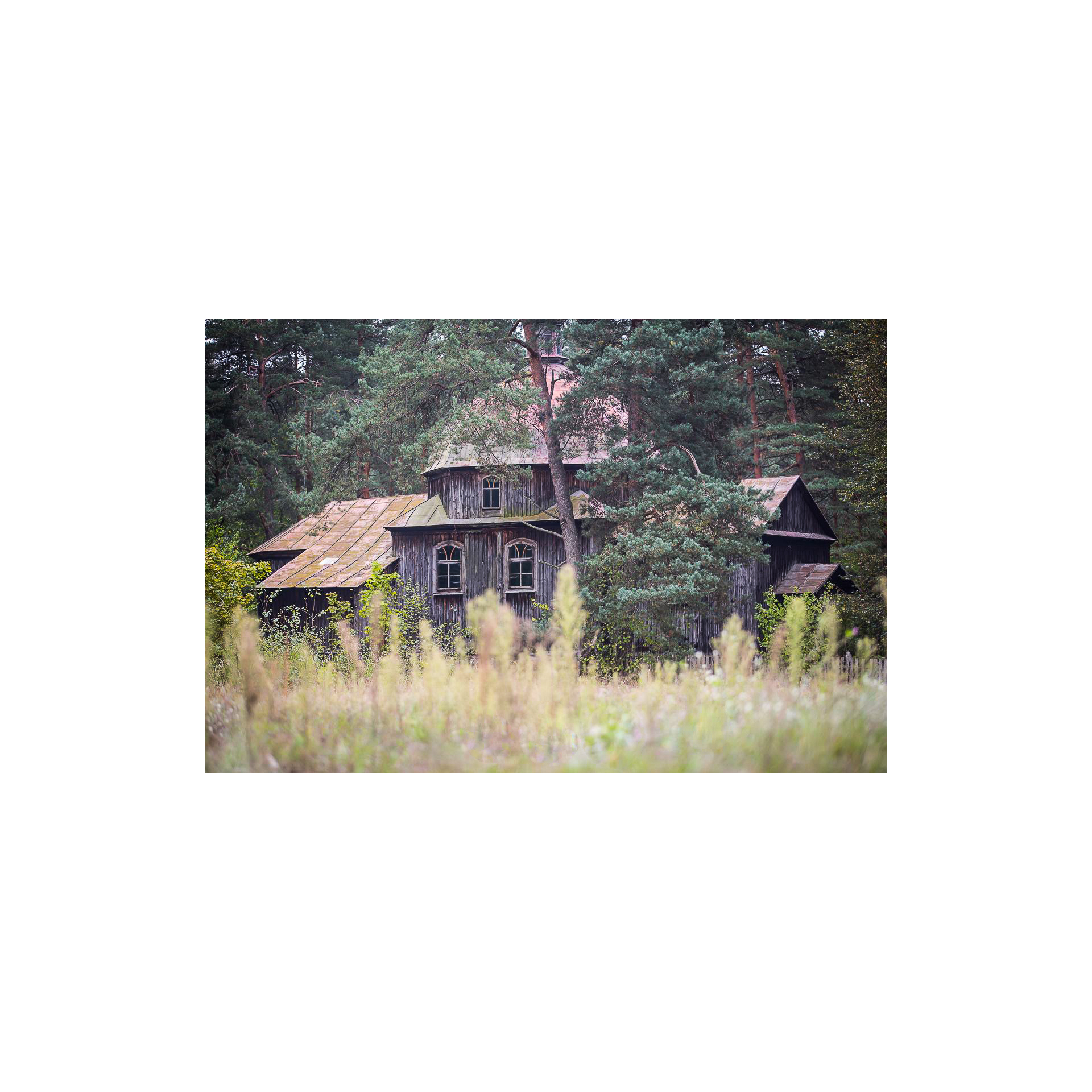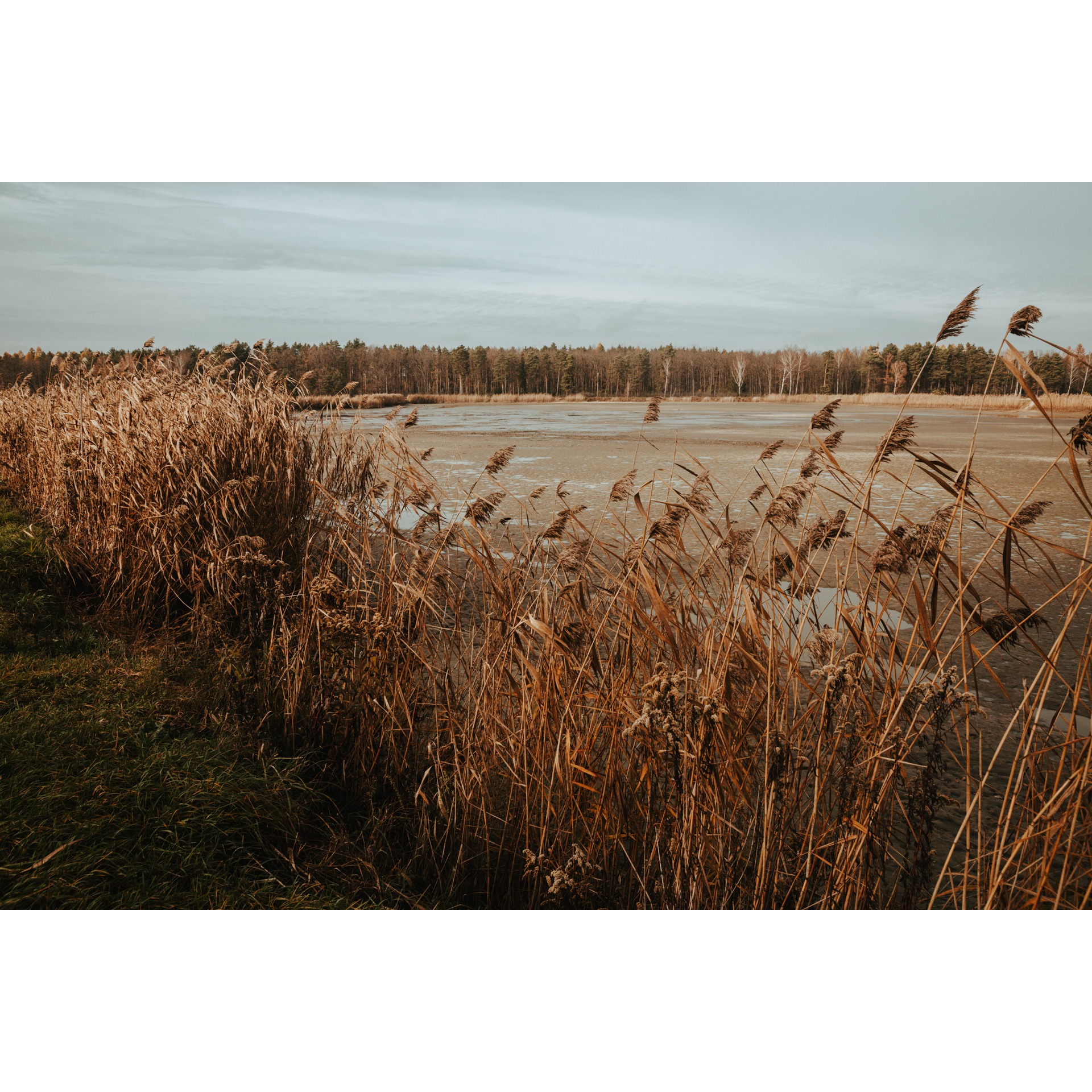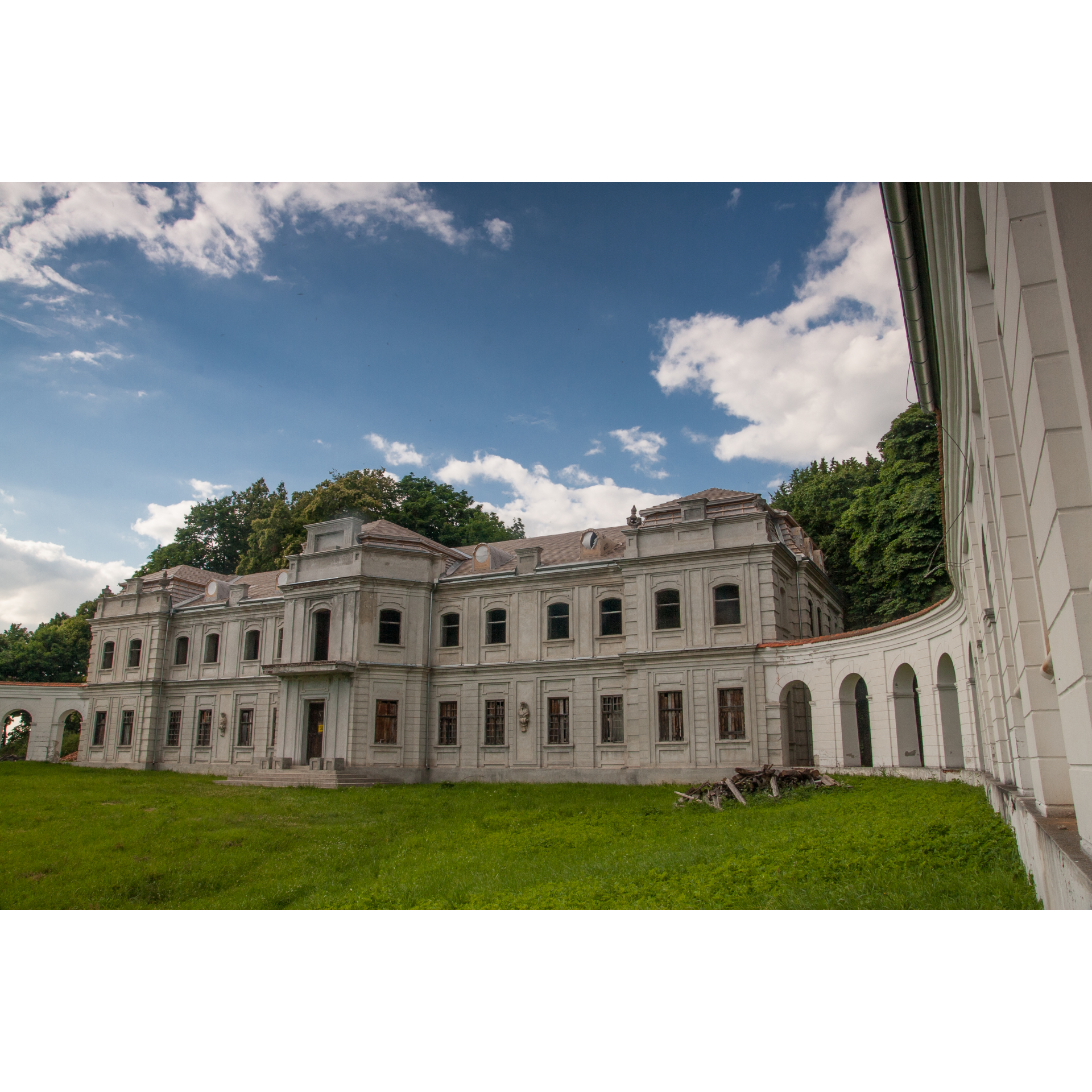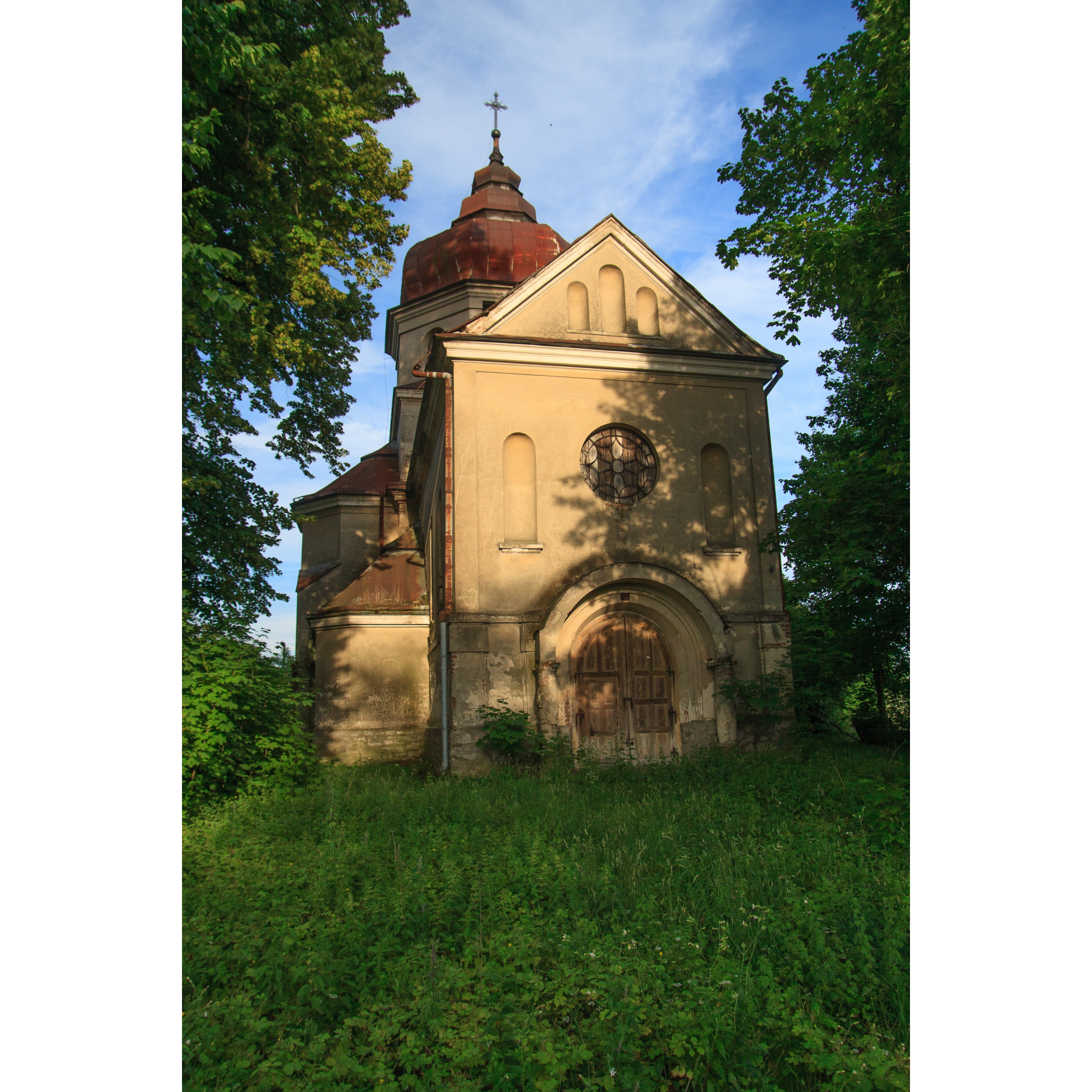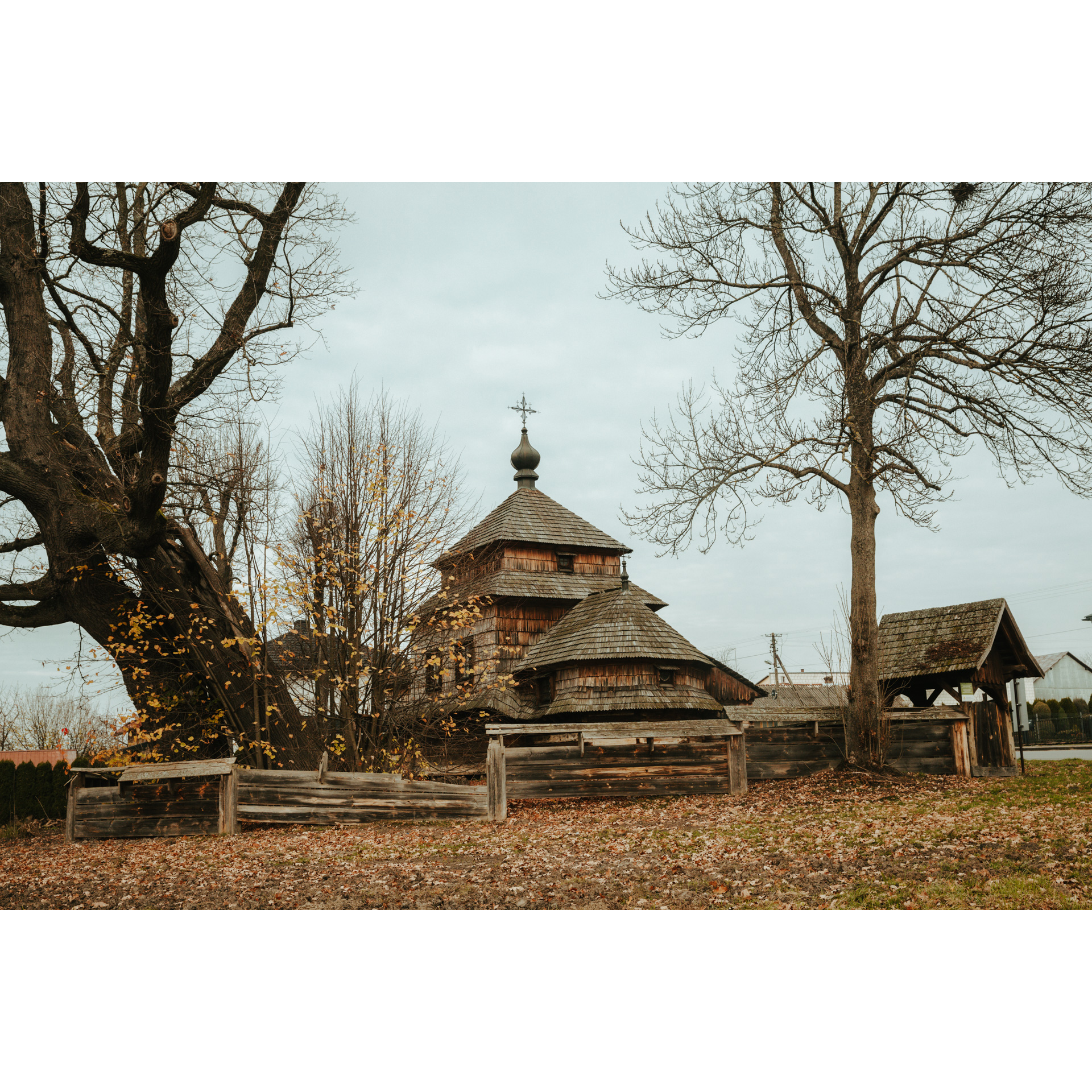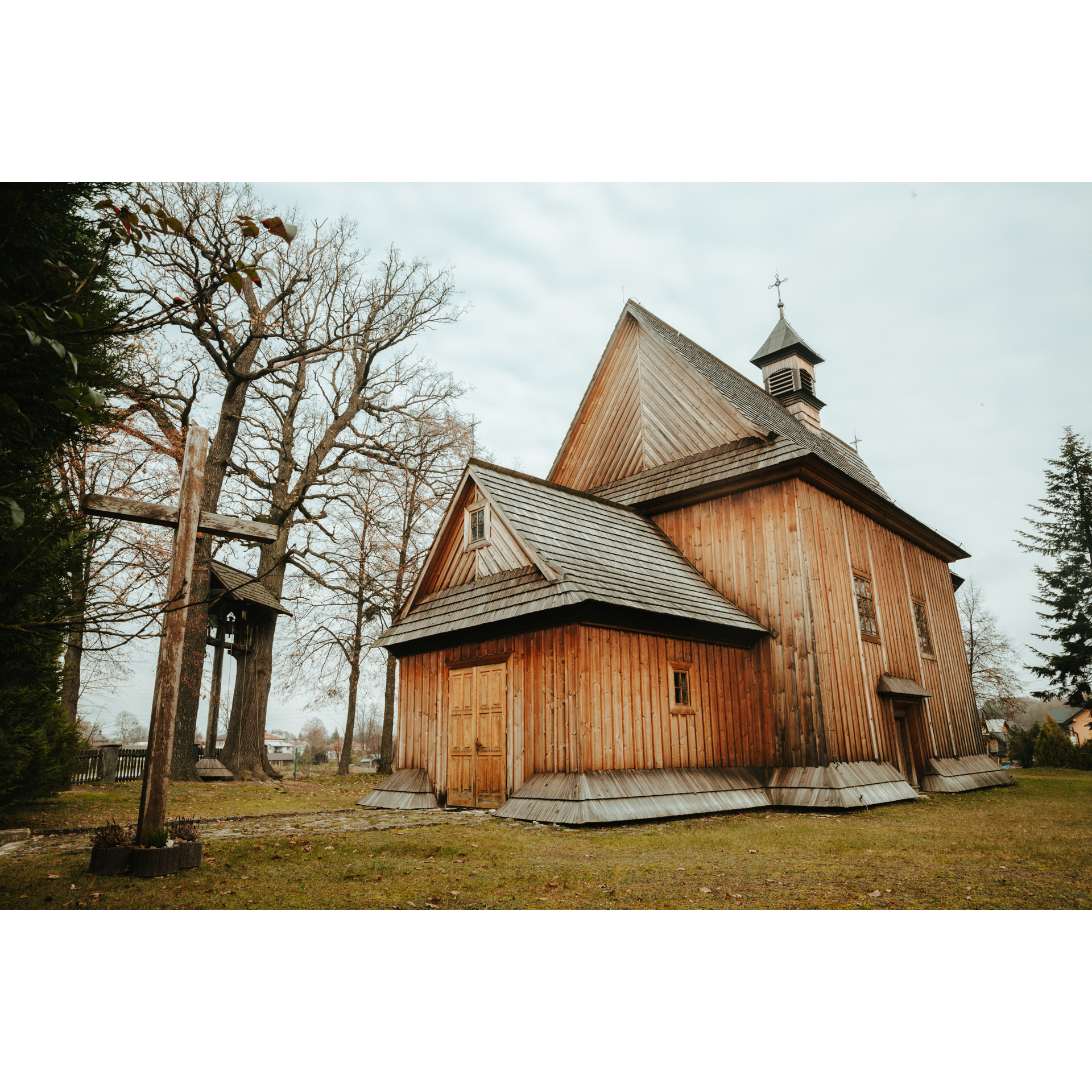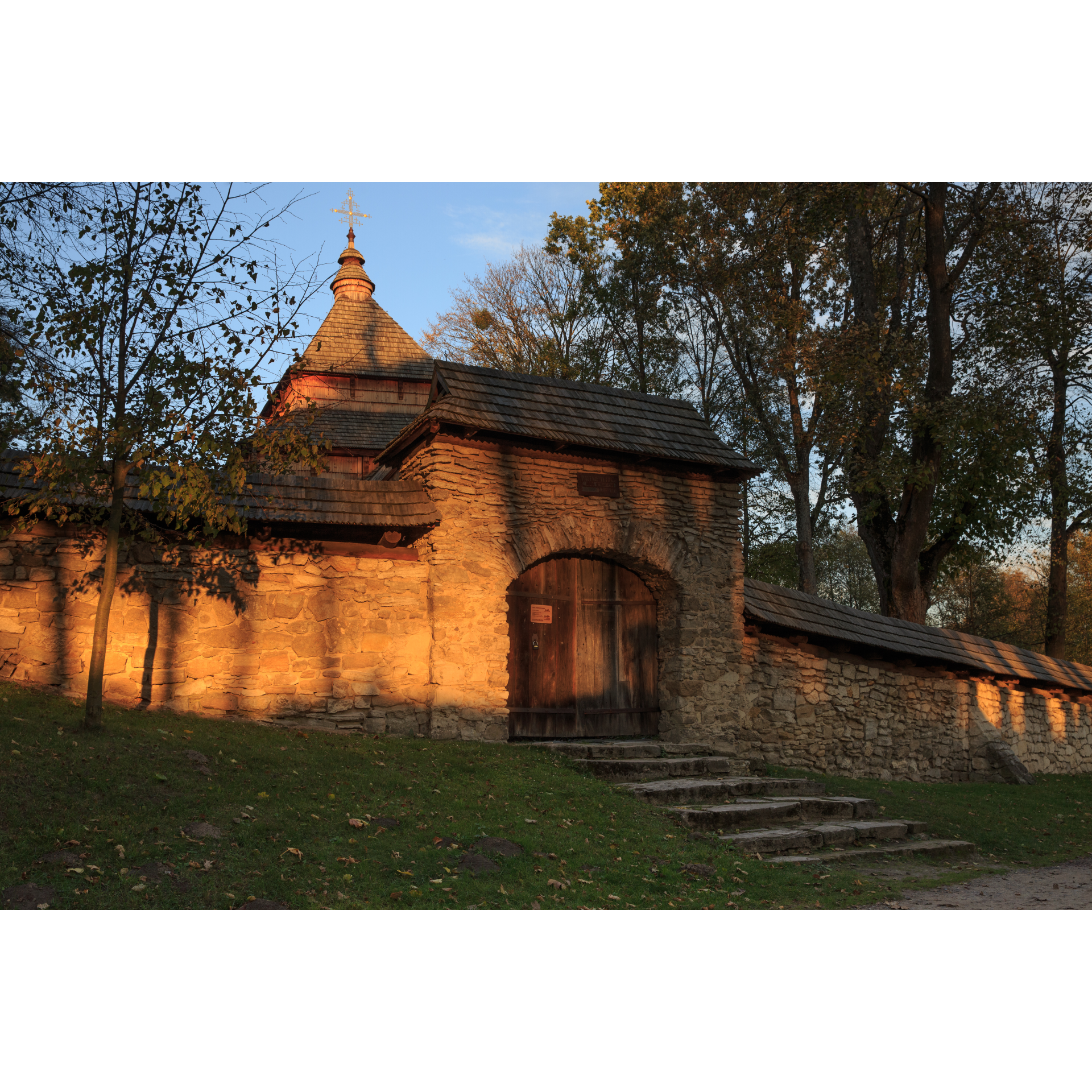
The 16th-century fortified tserkva complex in Radruż
Poland's oldest tserkva?
The 16th-century fortified tserkva complex in Radruż
Lying a few hundred metres from the border, the tserkva in Radruż is one of the oldest monuments of its kind in Poland, dating back to the 16th century. It was built as part of a defensive structure, surrounded by a simple stone wall with a shingled roof, giving the population protection against the Tartars. It is worth paying attention to the low passages in the wall and the entrance to the church. The building itself is squat and two-storey, indicating that perhaps there were two altars here as late as the 18th century. The lack of Byzantine domes is interesting as well as extended shelters, called Soboty, and the interior with polychromes, a rich iconostasis from the 17th century. Details, like the resonating hollows left in the walls, which improved the acoustics, are very significant. Next to it is a defensive belfry, and outside the wall is a cemetery with numerous Brusno gravestones. The tserkva was inscribed on the UNESCO World Heritage List in 2013.
